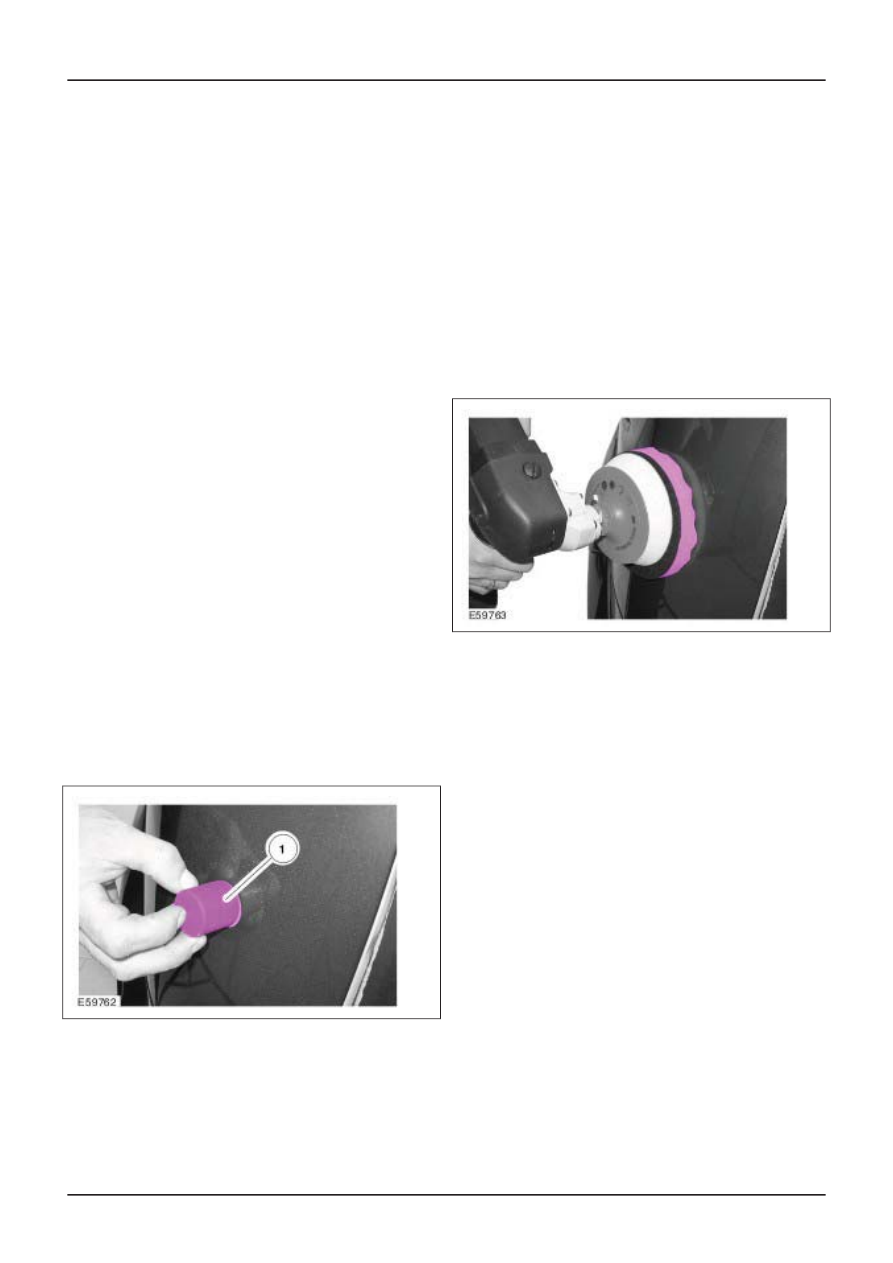Ford Focus RS (2011 year). Manual - part 139

Level IV - Repair painting with stopper applied to
more than 50% of the surface.
In repair level IV, apart from painting the complete
bodywork surface, partial stopper work is carried
out on more than 50% of the surface to be painted.
The necessary primer and filler work are also
included.
The following damage must be rectified in this level:
• Damage due to hail.
• More extensive stone chip damage.
• Extensively dented body panels.
• Sectional repairs with large weld seams.
• Surfaces with severe corrosion damage.
The scope of the work is different to level III
because of the partial application of stopper to
more than 50% of the area to be painted. In
addition, more extensive sanding work is usually
required.
Polish
In order to achieve faultless quality, it is sometimes
necessary afterwards to polish a newly painted
surface.
Even after the most careful painting, it sometimes
happens that dirt inclusions and paint runs occur
in work with top coat or clear lacquer. Before
polishing, such paint faults must be removed with
the sanding cylinder ("Finiball") and hand sanding
or eccentric sander in a wet sanding process.
Sanding cylinder
The special sanding compound -1- (sanding bloom)
for the sanding cylinder is self-adhering and
available in grades from P1000 to P2500.
• P1000 - P1500 for pre-sanding of runs and large
imperfections in the paint.
• P1500 - P3000 for subsequent sanding of runs
and sanding out of dust inclusions.
A small eccentric sander can be used for more
extensive working areas. When doing so, first of
all put the eccentric sander in place and then switch
it on, so that the danger of sanding through on
edge is reduced.
Finally polish the sanded area to a high gloss with
suitable polish. To this end the various
manufacturers recommend materials and process
techniques which are specially suited to their
products.
NOTE: The polishing is to be done in the same
way as that used to remove swirl marks.
Polish
NOTE: Before using the nap sponge for the first
time and after any long pauses in working, dampen
the nap sponge with polish.
Job steps:
• Clean and degrease the area to be polished
using silicone remover.
• Apply the polish to the polishing disc and spread
it.
• Place the polishing machine down flat on the
area to be polished and before switching it on,
gently distribute the polish over the underlying
surface.
• Polish out the location for 10 - 15 seconds with
the edge, working with a criss-cross motion.
• Subsequently polish the location for about 10
seconds with the machine laid down flat.
• Wash off and clean the polished location using
the professional polishing cloth and then clean
the polished surface.
• It is absolutely vital to carry out a visual check
after finishing the polishing procedure. If any
swirl marks are not completely removed by the
first polishing procedure, then process must be
repeated.
G506672en
501-36-
48
Paint - General Information
501-36-
48
DESCRIPTION AND OPERATION